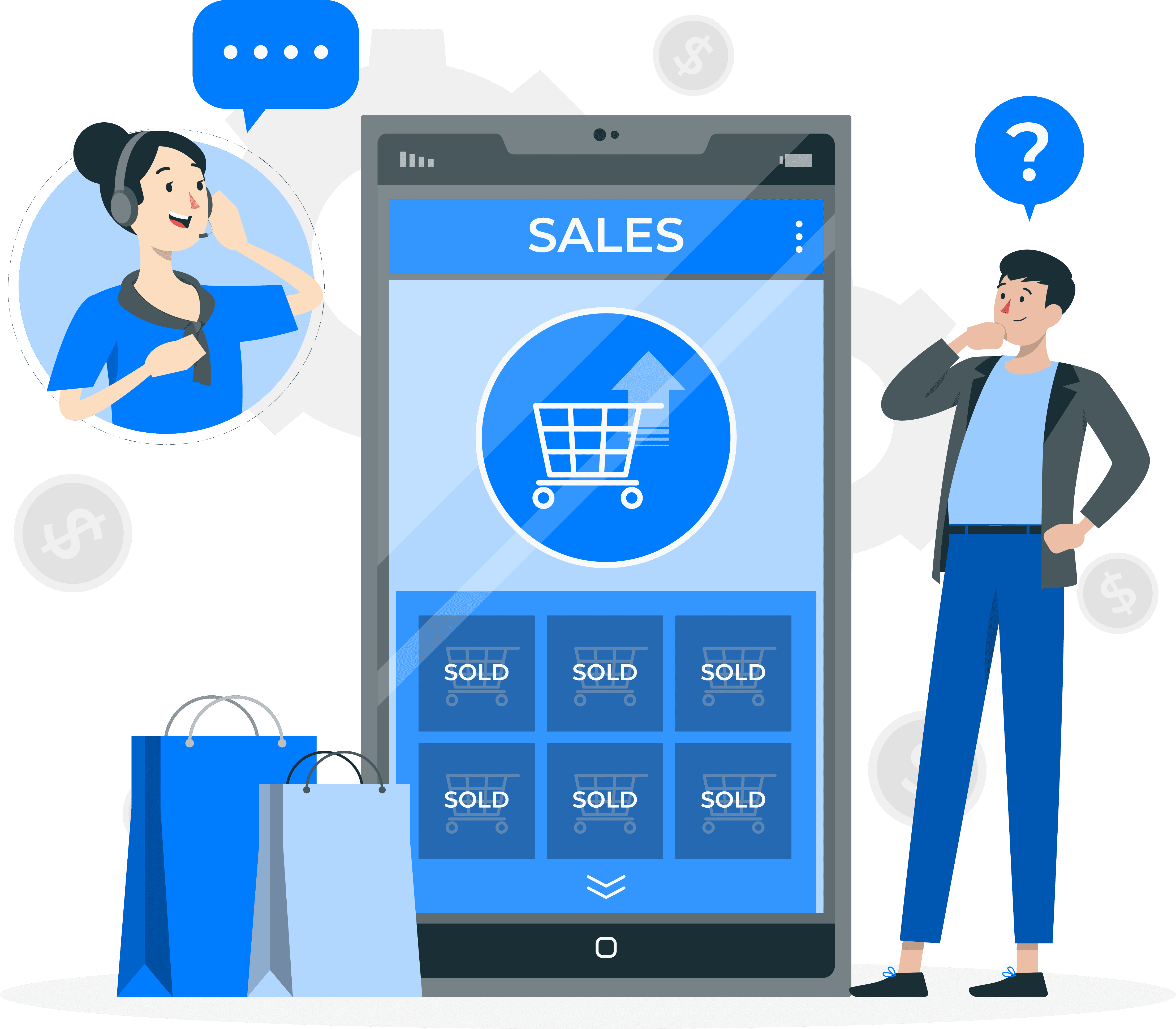
Next-Level Connections: Maintaining Customer Relationships with an Omnichannel Platform
Overview
"As businesses continue to navigate the ever-changing landscape of customer interactions, maintaining strong relationships with customers is more important than ever. With the rise of technology and digital communication channels, it's become essential for companies to have a cohesive and comprehensive omnichannel platform in place. To thrive in this environment, companies must embrace the power of an omnichannel platform, such as iMBrace, that seamlessly integrates various communication channels. In this blog post, we'll explore how an omnichannel approach can take your customer connections to the next level and provide tips for implementing this strategy effectively. Get ready to unlock a new era of customer connections as we explore the synergistic capabilities of iMBrace and the omnichannel revolution! So buckle up and get ready to learn how you can revolutionize your customer relationships with an omnichannel platform!"
Introduction to Omnichannel Platforms
As the world of business becomes more and more competitive, companies are looking for ways to set themselves apart from the competition. One way to do this is by offering an omnichannel platform to their customers. An omnichannel platform is a customer service strategy that integrates all of a company’s channels (e.g., brick-and-mortar store, website, mobile app, and social media) into one seamless experience.
The goal of an omnichannel platform is to provide a consistent customer experience regardless of how or where they interact with your company. This can be a challenge because each channel has its unique capabilities and constraints. For example, a customer may start researching a product on your website, then switch to your mobile app to make the purchase. Or they may interact with your brand on social media, then visit your brick-and-mortar store to return an item.
An omnichannel platform must be designed to accommodate these different interactions and provide a consistent experience across all channels. This can be done by integrating all channels into one platform or by creating separate but connected platforms for each channel. Either way, the goal is to provide customers with the same level of service and support regardless of how they interact with your company.
Omnichannel platforms offer many benefits to both businesses and customers. For businesses, they provide a way to better understand their customers and create loyalty among them. For customers, they provide a more convenient and personalized experience.
Benefits of Using an Omnichannel Platform
An omnichannel platform allows businesses to maintain customer relationships through a variety of channels. This type of platform provides a consistent experience for customers regardless of how they interact with the company.
Some benefits of using an omnichannel platform include:
- Improved customer satisfaction: Customers can easily get the answers they need and have a consistent experience, regardless of the channel they use.
- Increased customer loyalty: An omnichannel platform makes it easy for customers to connect with a company and continue doing business with them.
- Higher sales: An omnichannel approach can lead to increased sales as customers can purchase products and services through multiple channels.
- Improved efficiency: A centralized platform helps businesses keep track of customer interactions and data, making it easier to manage customer relationships.

Some tips for success when using an omnichannel platform:
As the world of marketing continues to evolve, so too must the strategies marketers use to maintain relationships with their customers. To keep up with the ever-changing landscape, marketers must now think in terms of an omnichannel platform that can provide a consistent experience across all channels.
- Define your customer segments:
Segmenting your customers is pivotal to crafting a tailored experience, as it allows you to gain deep insights into their preferences and desires. The omnichannel platform serves as a powerful tool to define distinct customer segments, enabling you to customize messaging and content precisely according to their unique requirements. - Create a buyer journey map:
Mapping the buyer journey becomes indispensable once you have a clear understanding of your customer segments. With an omnichannel platform at your disposal, you can comprehensively grasp the various stages and touchpoints involved in the purchasing process. This holistic understanding empowers you to strategically position your brand, determine the customers’ current relationship status with your business, and deliver the most relevant support at each stage of their journey. - Invest in the right technology:
An omnichannel platform is only as good as the technology that powers it. Make sure you invest in a platform that can provide a seamless experience across all channels and touchpoints. - Build a team of experts:
An omnichannel platform requires a team of experts to manage it effectively. Make sure you have the right people in place to plan, execute, and measure your campaigns.
By following these tips, you can create a successful omnichannel strategy that will help you build strong relationships with your customers. Dive into our related blog: Omnichannel vs Multichannel: Understanding the Key Differences
Examples of Companies Utilizing an Omnichannel Platform
An omnichannel platform gives companies the ability to provide a consistent customer experience across all channels. This allows companies to keep track of customer interactions and preferences, so they can provide a personalized experience that meets the customer’s needs.
Some examples of companies that are using an omnichannel platform include:
- Macy’s: Macy’s is using an omnichannel platform to provide a consistent shopping experience for their customers, whether they are shopping online, in-store, or through the Macy’s app. Customers can view the same product information and prices across all channels, and can even purchase items online and pick them up in-store.
- Nordstrom: Nordstrom is using an omnichannel platform to allow their customers the ability to shop online, in-store, or through the Nordstrom app. Customers can see real-time inventory levels for products across all channels, so they can be sure to find what they’re looking for. They can also take advantage of features like click-and-collect, which allows them to buy items online and pick them up in-store.
- Target: Target is using an omnichannel platform to create a seamless shopping experience for its customers. Customers can shop online, in-store, or through the Target app, and they can view the same product information and prices across all channels. They can also take advantage of features like order pickup and drive.
- iMBrace: an exceptional omnichannel platform. iMBrace is not only playing a role as an omnichannel platform but with its other useful features such as no-code workflow, and intelligent campaign management feature, businesses can unlock the immense potential of delivering an unparalleled customer experience across all channels, ultimately cultivating lasting customer loyalty and propelling their success in the market.
Tips for Optimizing Your Omnichannel Platform
As your business expands, catering to a diverse customer base becomes imperative. Your customers may interact with your brand through various channels, such as online, physical stores, or a combination of both. To deliver an exceptional experience to all customers, it is vital to ensure that your omnichannel platform seamlessly supports and integrates these diverse interactions.
Here are some valuable tips for integrating and optimizing your omnichannel platform:
Ensure multi-channel support:
Your platform must effectively accommodate multiple channels, including web, mobile, and in-person interactions. It should facilitate effortless transitions between channels for customers who primarily engage with your business through a specific channel. For instance, if a customer typically makes purchases online but wishes to return an item in person, the platform should facilitate a smooth and convenient process.Harness the power of customer data:
Utilize customer data collected from all channels to personalize the omnichannel experience. By creating individual customer profiles based on this data, you can gain profound insights into their preferences and requirements. This allows you to tailor the customer experience to align with their needs, enhancing satisfaction and engagement.Enable seamless channel switching:
Design your platform with a seamless transition between channels in mind. Customers should be able to effortlessly switch between channels without any inconvenience. For instance, they could start browsing your products on your website and then continue the process on your mobile app, or initiate a conversation with customer support via social media and then seamlessly switch to live chat on your website
By implementing these tips, you can optimize your omnichannel platform to deliver a cohesive and exceptional customer experience across all channels. This seamless integration empowers customers to interact with your business effortlessly, fostering stronger connections and boosting overall satisfaction.
Challenges of Maintaining Customer Relationships through an Omnichannel Platform
An omnichannel platform gives businesses the ability to connect with customers through a variety of channels, including in-person, online, and mobile. While this provides a great opportunity to build customer relationships, it also presents some challenges.
For one, businesses need to be sure that their omnichannel platform is integrated and easy to use. Customers should be able to move seamlessly from one channel to another without any hiccups. Otherwise, they may get frustrated and take their business elsewhere.
Another challenge is maintaining consistent messaging across all channels. This can be a tall order, especially if different team members are responsible for different channels. But it's important to make sure that customers receive the same message regardless of how or where they interact with your business.
You need to be prepared to handle an increase in customer inquiries and requests. An omnichannel platform gives customers more ways to reach out, which means you'll need to have the resources in place to respond quickly and effectively.
If you can overcome these challenges, an omnichannel platform can help you build stronger relationships with your customers and take your business to the next level.

Conclusion
Maintaining customer relationships is essential to the success of any business. An omnichannel platform can help you take your customer relationships to the next level by providing an integrated, seamless experience across all channels and devices. With a comprehensive approach that spans web, mobile, social media, and traditional communications platforms, businesses can leverage omnichannel strategies to create meaningful connections with their customers. By staying connected through an omnichannel solution, businesses will be equipped to build strong customer relationships and foster loyalty in today’s increasingly competitive marketplace.
With iMBrace's advanced omnichannel platform, businesses gain invaluable insights into customer preferences, behaviors, and purchasing patterns. This comprehensive understanding allows companies to tailor their offerings and communications to meet individual customer needs, fostering a sense of loyalty and satisfaction. On the customer side, iMBrace's omnichannel platform ensures a seamless and convenient experience across various touchpoints. Whether customers choose to interact via the website, mobile app, social media, or in-store, iMBrace empowers businesses to provide a cohesive and personalized journey, enhancing convenience and meeting customers' evolving expectations. By leveraging the power of iMBrace's omnichannel platform, businesses and customers can forge stronger connections and mutually beneficial relationships.
Join iMBrace and increase your productivity.


